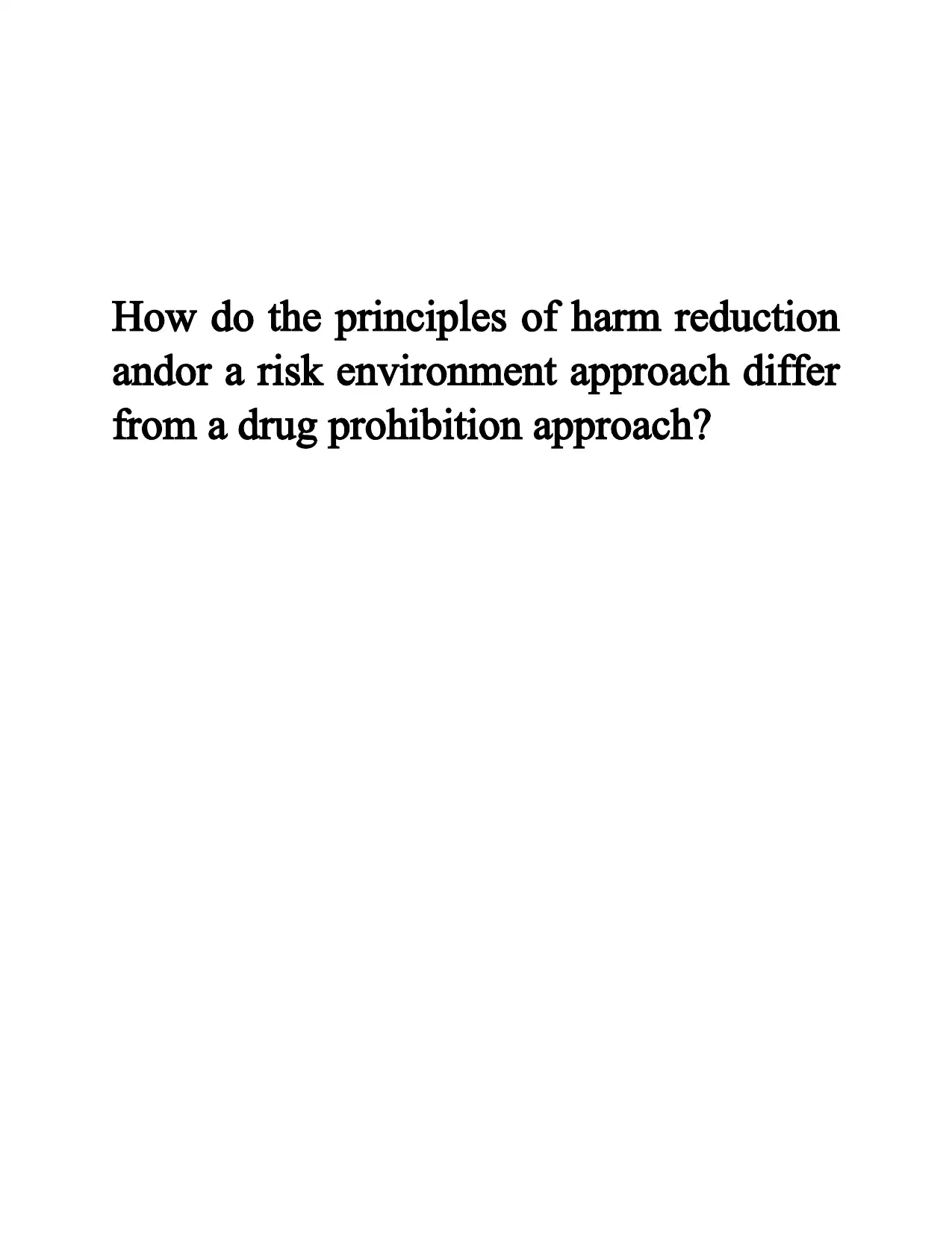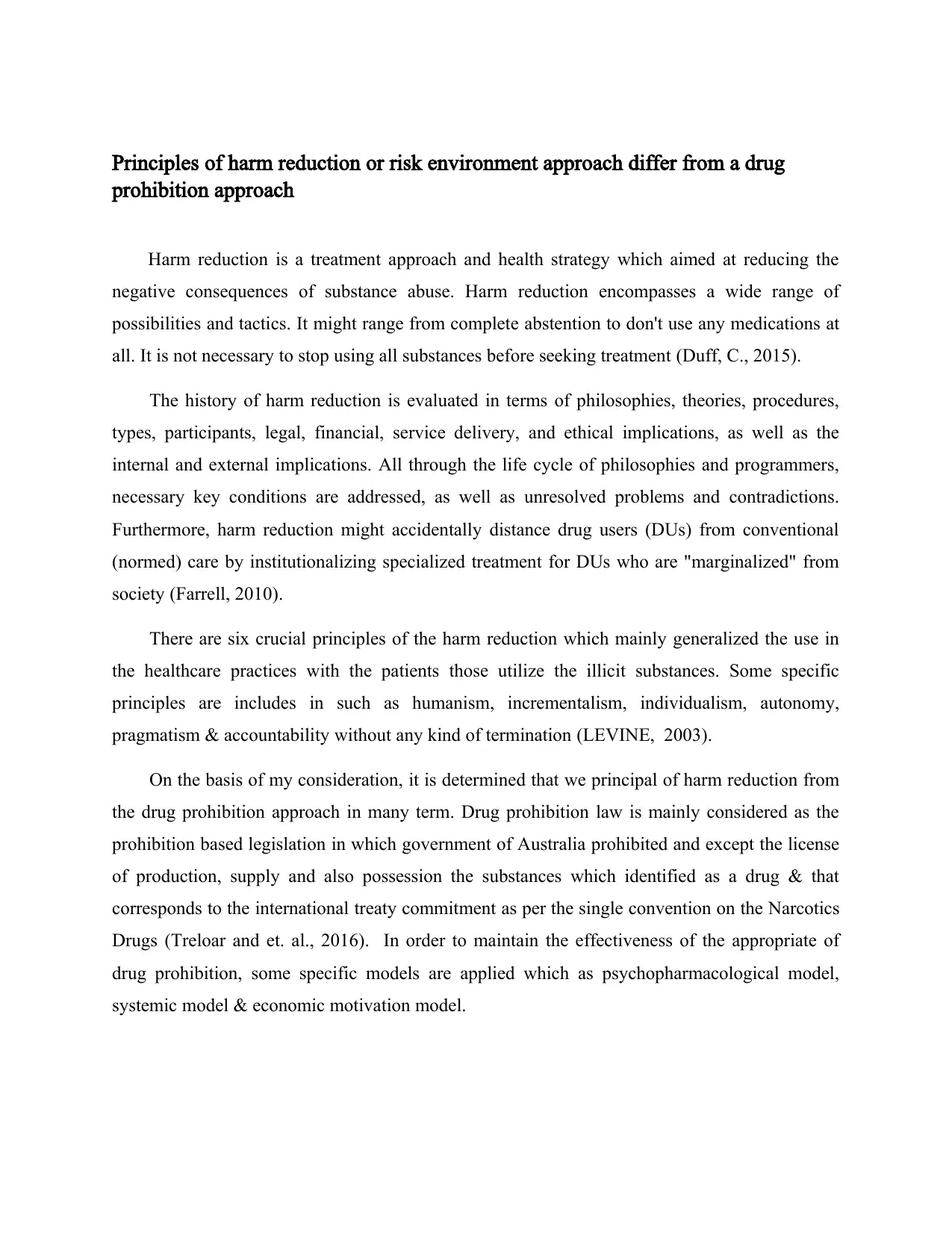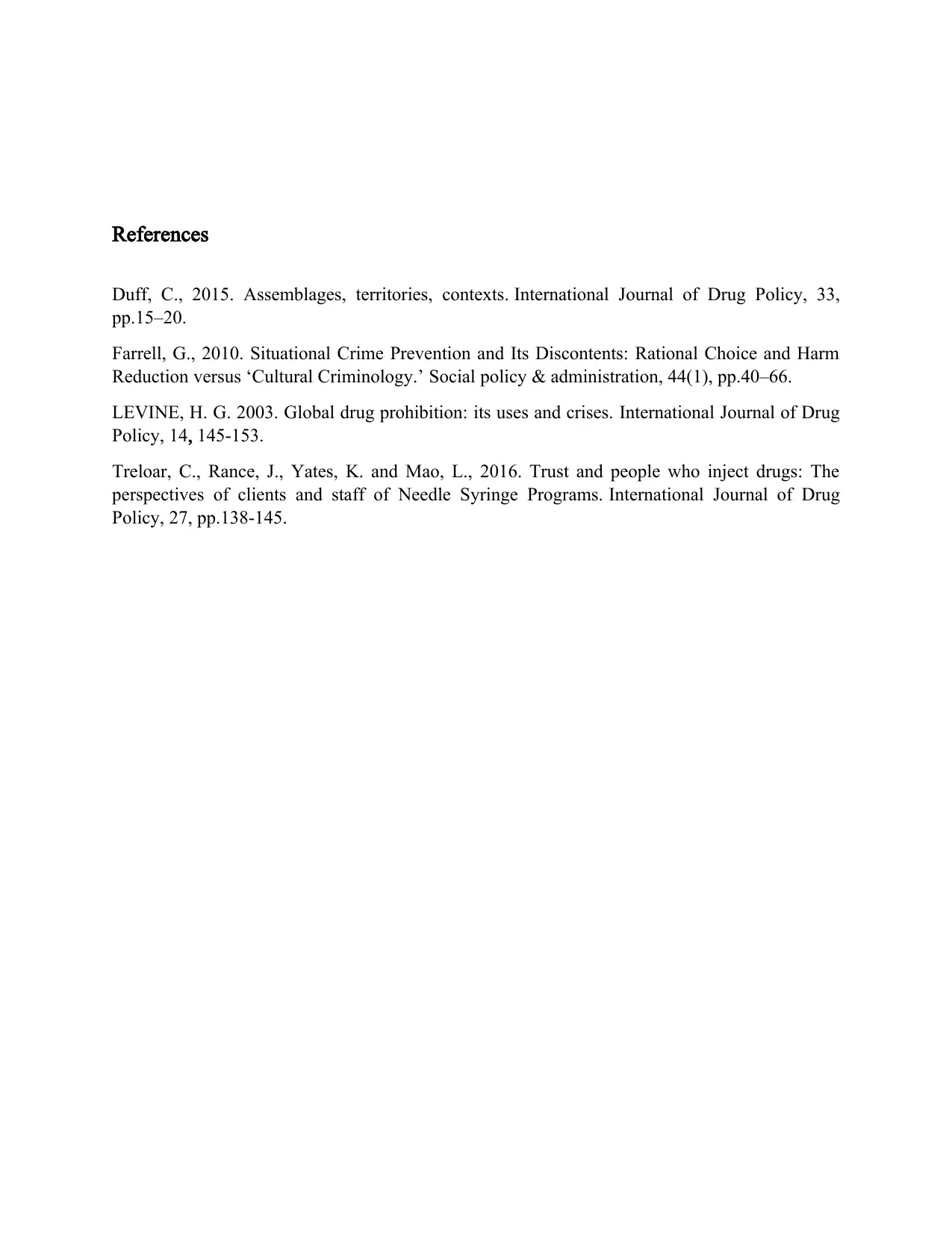Principles of Harm Reduction vs. Drug Prohibition Approach
VerifiedAdded on 2023/06/18
|4
|525
|323
Essay
AI Summary
This essay examines the contrasting principles of harm reduction and drug prohibition approaches to substance abuse. Harm reduction is presented as a treatment and health strategy focused on minimizing the negative consequences of drug use, encompassing a range of tactics from complete abstinence to pragmatic harm reduction measures. The essay highlights the six core principles of harm reduction: humanism, incrementalism, individualism, autonomy, pragmatism, and accountability. In contrast, drug prohibition is described as legislation that prohibits the production, supply, and possession of substances identified as drugs, aligning with international treaty commitments. The essay also touches upon models used to enforce drug prohibition, such as the psychopharmacological, systemic, and economic motivation models. It concludes by emphasizing the fundamental differences between these two approaches, with harm reduction prioritizing the well-being and autonomy of drug users, while drug prohibition focuses on legal restrictions and enforcement.
1 out of 4





![[object Object]](/_next/static/media/star-bottom.7253800d.svg)